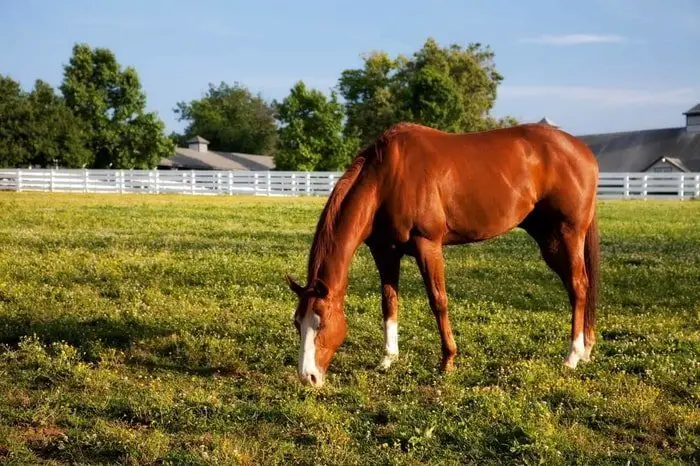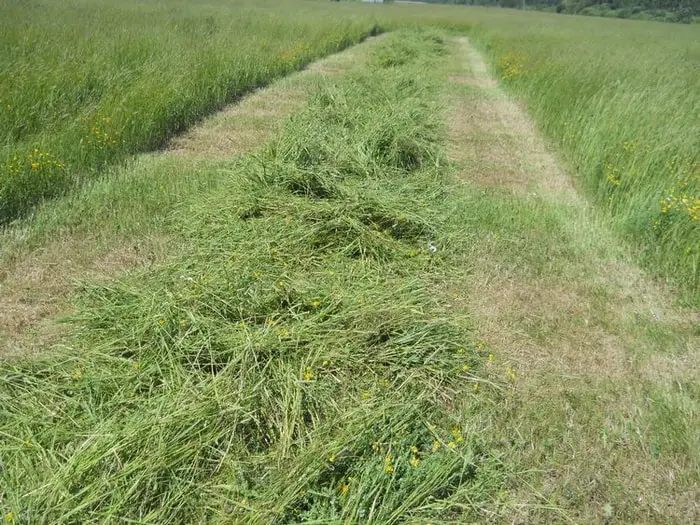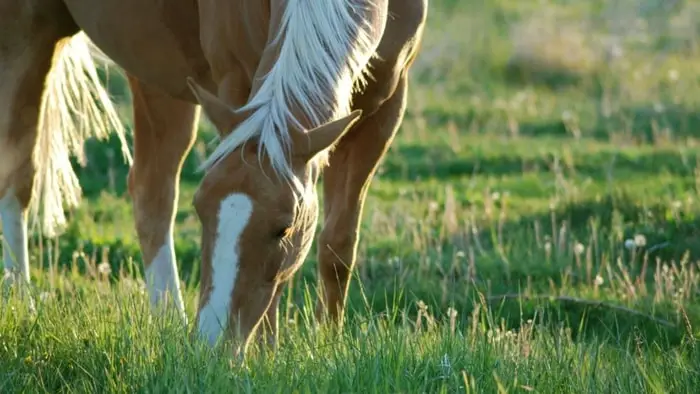Horse pasture can be very important in horse feeding. Good horse pasture, water, and trace mineralized salt can provide complete nutrition for many classes of horses, such as mature, yearlings, nonworking animals, and pregnant mares. Hardworking horses, lactating mares, and weanling may require nutrient intake greater than that provided by pasture. However, several factors are pasture management, species of plant, and amount of land determine the amount of nutrition obtained from pastures.
Management of Horse Pasture
Some features of good horse pasture management are:
- Test soil to determine how much lime fertilizer is needed.
- Be sure not to overgraze. Too many pastures are exercised lots.
- Rotating pasture is also beneficial to the parasite prevention program.
- Clipping pastures prevents plant material from becoming too mature, helps maintain a balance of legumes and grasses, and control weeds.
- Scatter manure piles.
- Keep pasture free of mechanical hazards such as wire and nails.
- Keep horse pasture free of weeds, particularly poisonous weeds such as nightshade, yellow starthistle, horsenettle, and ragwort.
- Keep horses out of the pasture during extreme wet weather to avoid damage to the turf.

Plant Species of Horse Pasture
The species of plant used in the pasture depends on local soil and climate conditions; many different plant species can be used in horse pastures, and the local extension agent can provide appropriate information concerning species and plant and fertilizing procedures.
1. Bluegrass, bluestem, bromegrass, fescue, orchard grass, and cereal grasses are examples of grasses frequently used for horse pasture.
2. In warm climates such as Florida, pangola, bahiagrass, carpet grass, or para grass are often used in horse pastures.
3. Legumes include alfalfa, red clover, white clover, and birdsfoot trefoil. However, red clovers do not provide a long-lasting pasture.
4. Mixture of grasses and legumes is usually most satisfactory because they provide a more significant amount of nutrients and a more extended grazing season.

Essential Points to be Noted About Horse Pastures
The following points you must bear in mind while pasture management:
- Canarygrass was good pasture grass for horses early in the grazing season, but that in the latter part, palatability decreased significantly because of increased alkaloid content. Thus canarygrass should not be used as the only pasture.
- Birdfoot trefoil is productive even when grown on poor drainage soil but is more difficult to establish than other legumes.
- Sorghum-sudangrass hybrid should be avoided because they may produce cystitis syndrome, which irritates the bladder.
- Tall fescue pasture should be used with care. Id consumed by pregnant mare during the eleven-month pregnancy may cause prolonged gestation, thickened placenta, abortion, weak foal, and lack of milk production.
- Ryegrass infested with certain molds may cause a neurologic disorder characterized by muscular tremor, locomotor incoordination, and tetany. The condition is called “Ryegrass taggers.”
- Legume pasture containing the mold Rhizoctonia leguminicola may cause excessive salivation in horses.
- A large intake of alsike pasture may cause photosensitization and liver disease in horses.

Amount of Land for Horse Pastures
The amount of land per horse to provide adequate nutrition depends on:
- Type or class of horse.
- Rainfall.
- Soil fertility.
- Plant species.
- Shade.
- Pasture management.
One acre of renovated legume grass pasture that was adequately managed and enjoyed good growing conditions could provide enough food for a horse during the grazing season. It is recommended that there should be at least 2-3 acres of pasture per horse.
Concluding Remarks on Horse Pasture
A well-managed pasture reduces the rearing cost of horses a lot. Horses of everyday work can live only pasture grazing. The horse need not supply extra ration, concentrate, cereals, or other supplements. You must select good quality pasture grasses that will live around the year. You must also bear in mind the above points while managing the horse pasture.